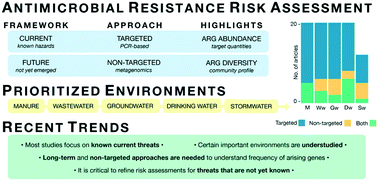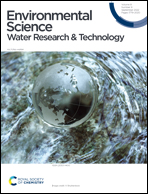Targeting current and future threats: recent methodological trends in environmental antimicrobial resistance research and their relationships to risk assessment
Abstract
Antimicrobial resistance (AMR) is a growing public health threat. Improved surveillance of AMR's genetic indicators in environmental reservoirs should lead to a more comprehensive understanding of the problem at a global scale, as with SARS-CoV-2 monitoring in sewage. However, the “best” monitoring approach is unclear. Some scientific works have emphasized monitoring for the abundance of already-known antimicrobial resistance genes (ARGs); others have emphasized monitoring for the potential of new ARGs to arise. The goal of this study was to examine which methods were employed by highly-cited papers studying AMR in environmental engineering and agricultural systems, thus providing insight into current and future methodological trends for monitoring ARGs. We searched recent (2018–2020) literature documenting AMR in five environmental matrices: wastewater, surface water, drinking water, stormwater, and livestock manure. We selected the most highly-cited papers across these matrices (89 papers from 17 809 initial results) and categorized them as using targeted methods (e.g., qPCR), non-targeted methods (e.g., shotgun metagenomics), or both. More than 80% of papers employed targeted methods. Only 33% employed non-targeted methods, and the use of targeted versus non-targeted methods varied by environmental matrix. We posit that improving AMR surveillance in environmental reservoirs requires assessing risk, and that different monitoring approaches imply different objectives for risk assessment. Targeted methods are appropriate for quantifying known threats, particularly in environmental matrices where direct human exposure is likely (e.g., drinking water). However, long-term studies employing non-targeted methods are needed to provide an understanding of how frequently new threats (i.e., novel ARGs) arise.

- This article is part of the themed collections: Recent Open Access Articles and Best Papers 2022 – Environmental Science: Water Research & Technology


 Please wait while we load your content...
Please wait while we load your content...